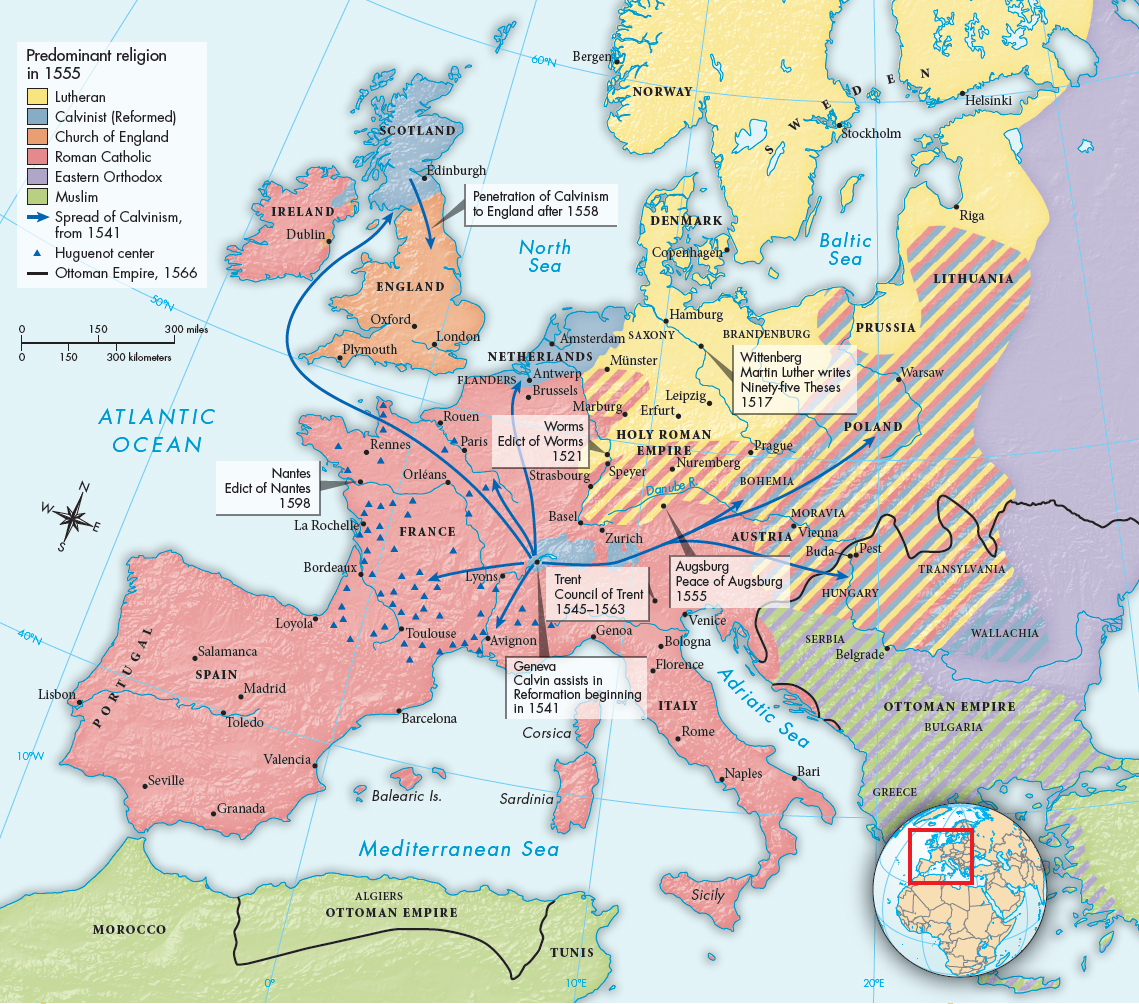A History of World Societies:
Printed Page 448
A History of World Societies Value
Edition: Printed Page 446
Chapter Chronology
Between 1517 and 1547 Protestantism made remarkable advances. Nevertheless, the Roman Catholic Church made a significant comeback. After about 1540 no new large areas of Europe, other than the Netherlands, accepted Protestant beliefs (Map 15.2). Many historians see the developments within the Catholic Church after the Protestant Reformation as two interrelated movements, one a drive for internal reform linked to earlier reform efforts, and the other a Counter-Reformation that opposed Protestants intellectually, politically, militarily, and institutionally. In both movements, papal reforms and new religious orders were important agents.

Mapping the PastMAP 15.2 Religious Divisions in Europe, ca. 1555 The Reformation shattered the religious unity of Western Christendom. The situation was even more complicated than a map of this scale can show. Many cities within the Holy Roman Empire, for example, accepted a different faith than did the surrounding countryside; Augsburg, Basel, and Strasbourg were all Protestant, though surrounded by territory ruled by Catholic nobles.ANALYZING THE MAP Which countries in Europe were the most religiously diverse? Which were the least diverse?CONNECTIONS Where was the first arena of religious conflict in Europe, and why did it develop there and not elsewhere? What nonreligious factors contributed to the religious divisions that developed in sixteenth-century Europe, and to what degree can they explain these divisions?
